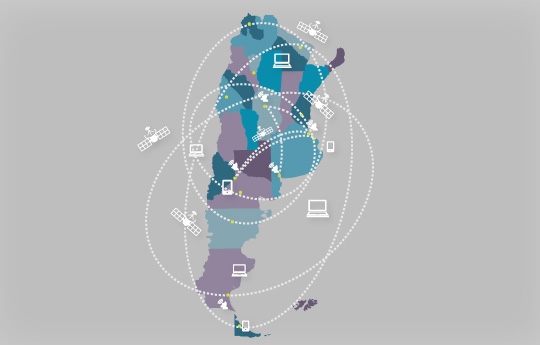AGRARIAN, ENGINEERING AND MATERIAL SCIENCES
Research network to optimize the development of telecommunications’ technology
Scientists at the CONICET explain how they designed the network that aims to connect studies conducted in the country.
The objective of the “Research Network for the development of technology in telecommunications” is promote the joint work of scientists and technicians throughout the country in order to optimize the technological and human resources on the subject.
“We work on specific areas that in Argentina were treated separately because we were all divided [in different parts of the country] and these themes now have become more relevant”, states Cecilia Galarza, associate researcher at the Centro de Simulación Computacional Para Aplicaciones Tecnológicas (CSC) [Computing Simulation Centre for Technology Applications].
Along with colleagues Mario Hueda, independent researcher at the National University of Córdoba; Juan Cousseau, independent researcher at the Instituto de Investigaciones en Ingeniería Electrica “A. Desages” (IIIE, CONICET-UNS) [Research Institute on Electrical Engineering “A. Desages”] in Bahía Blanca; Carlos Muravchik of the University of La Plata; and Rubén Milocco, independent researcher at the National University of Comahue, designed this research network at a national level to combine forces and research on telecommunications. Recently, Javier Areta, assistant researcher of CONICET at the University of Río Negro has joined the Network.
Galarza commented that they noticed that the industrial sector there was a disconnection between companies and scientific knowledge, and this has become more evident in the last workshop for studies on Telecommunications organized by the Technology Transfer Office (DVT, in Spanish) of the Council, the Secretaría de Comunicaciones (SECOM) [Communications Secretariat], and the Comisión Nacional de Comunicaciones (CNC) [National Communications Commission], in which several companies were surprised to know the developments and research carried out in the scientific area.
“Some of them did not know that it existed so they were glad with our work”, the researcher adds.
From Córdoba, Bahía Blanca and Buenos Aires, some of the members of this network describe this scientific association and its achievements.
When did you start working on this work methodology?
Cecilia Galarza: It began in 2005, with the first project funded by the CONICET and we are now undertaking the third one.
Juan Cousseau: We share several instances, courses and codirect the same fellows so as to complement each other. Academically speaking, the great secret is not to compete.
What is the objective of the network?
C.G.: Firstly, the training of human resources and the designation of courses and workshops that we share with all the members of the network. It is aimed at postgraduate education, basically for professionals who are PhD or master’s degree students that are part of the network. They attend courses and present their studies and ideas in the workshops where there are open debates in a relaxed atmosphere.
Mario Hueda: The possibility of interacting with the groups, apart from the workshops, is another aspect that has worked throughout these years.
What were the achievements of this system or research network?
C.G.: I notice a greater thematic presence in the pool of researchers. Those were research areas used to belong to other areas and someone suddenly decided to take them.
J.C.: It did not exist as a specific area within the CONICET. It was the Council itself that academically recognized the importance of this area and created in 2006 the Comisión Asesora de Informática y Comunicación [Advisory Commision on Computing and Communication]. The number of graduates and the quality of projects increased within that commission. The aim was to foster the growth of strong scientific research groups, and there were also cases that became part of industries. The majority is within the academic-scientific field.
M.H.: These are cases in which knowledge and technology are being transferred from the university. Some of them, graduated, became part of the initial staff and developed activities in the industry, which is one of the objectives that we have: to train qualified human resources and to promote they continue conducting activities within this area of interest.
C.G.: One of the first graduates of this network is the leader of a research and development team at the University of La Plata and the network had provided him with the support that helped him to obtain the best results.
Which would be the step to turn it into a formal network?
C.G.: There are some points to establish, in fact, one of its weaknesses is its informality. This network emerged as necessity of the five of us; then more people joined in and we managed to develop our idea with the funding of projectos plurianuales [long-term projects] of the CONICET. Our objective was to strengthen this network to train human resources for research. Different commissions consider that our work is valid so we continue working.
Is that in process?
J.C.: The inter-university network funded by National Ministry of Education, with economic support, aims to formalize and establish an inter-university postgraduate course or a master’s degree according to the network.
J.C.: The prime objective is the training of human resources in these areas that generate, at an industrial level, a lot of money inside and outside the country. So far there have not been precedents of this type of networks, with these objectives.
- By María Bocconi
